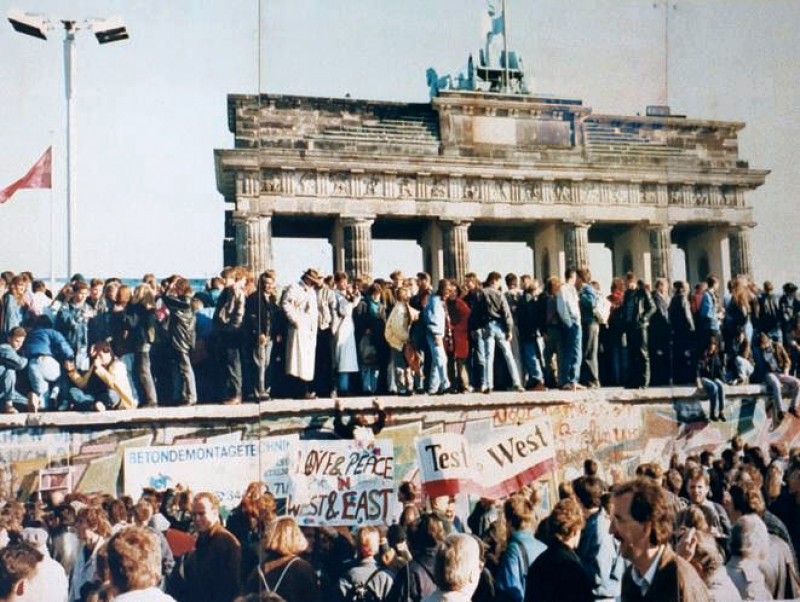When do you think this photo was taken?
About This Photo:
The fall of the Berlin Wall in 1989 remains one of the most iconic and emotional moments of the 20th century, symbolizing the end of the Cold War and the reunification of Germany. The Brandenburg Gate, located at the heart of Berlin, became the stage for a historic encounter between East and West Germans, as citizens from both sides of the divided city came together in a powerful expression of unity and hope. This moment marked not only the physical dismantling of the wall but also the collapse of decades of division that had separated families, communities, and a nation.
The Berlin Wall: A Symbol of Division
For nearly 30 years, the Berlin Wall stood as a stark symbol of the division between East and West Germany. Erected in 1961 by the German Democratic Republic (GDR), the wall physically separated East Berlin, controlled by the Soviet-backed government, from West Berlin, a democratic enclave within communist East Germany. The wall became the embodiment of the ideological divide between the Soviet bloc and the Western world during the Cold War.
The Brandenburg Gate, once a symbol of unity in Berlin, was now caught between the two worlds—standing at the border between East and West Berlin. It remained a silent witness to the struggles and tensions of a divided nation. However, by 1989, the winds of change were sweeping across Eastern Europe, and the walls of division were beginning to crumble.
The Historic Moment: November 9, 1989
On the night of November 9, 1989, the Berlin Wall opened unexpectedly. In a miscommunication by East German government officials, it was announced that citizens could cross into West Berlin, leading to a rush of people from both sides of the wall heading toward the Brandenburg Gate. As thousands of East Germans gathered at the wall’s crossing points, jubilant West Berliners gathered on the other side, both groups eager to celebrate their newfound freedom.
The Brandenburg Gate, which had long symbolized separation, suddenly became a beacon of unity. West and East Germans stood side by side, celebrating the fall of the wall, sharing stories, tears, and embraces. Families reunited, and the divided city seemed to breathe a collective sigh of relief as the dream of a united Germany began to take shape. The night was filled with elation, as chants of “Germany, Germany” echoed through the streets.
The Aftermath: Reunification and the Future
The emotional scenes at the Brandenburg Gate in 1989 marked the beginning of a new chapter for Germany. The reunification process began soon after, culminating in the official reunification of East and West Germany on October 3, 1990. The dismantling of the Berlin Wall was not just a physical act but a profound political and social transformation, as the East German regime crumbled, and the country embarked on rebuilding its national identity.
The Brandenburg Gate remains an enduring symbol of that historic night and the eventual reunification of Germany. Today, it stands as a powerful reminder of the resilience of the human spirit, the pursuit of freedom, and the ability of people to overcome the most formidable of divisions. The events of 1989 continue to inspire individuals worldwide, symbolizing the triumph of hope and unity over separation and oppression.

